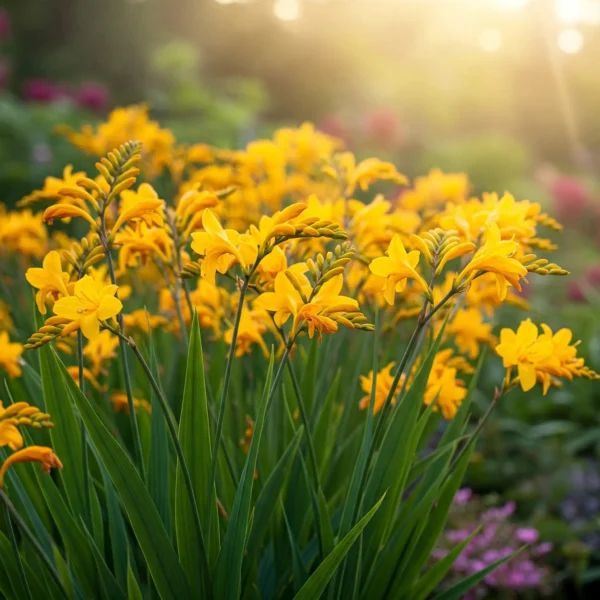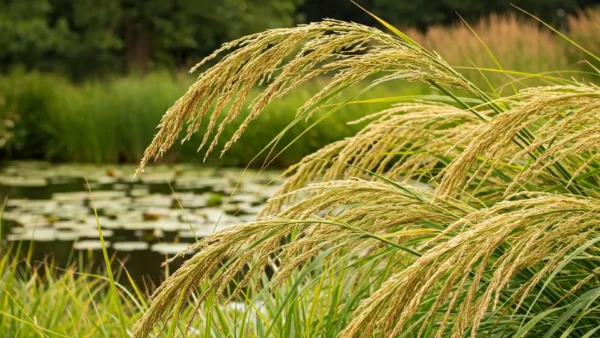Echinacea purpurea ‘Sundown’ – Coneflower
Echinacea purpurea “Sundown” Coneflower is a magnificent perennial flowering plant with vivid, sunset-hued blooms and strong character. Gardeners and landscapers love this cultivar, which is part of the Big SkyTM line for its strong color, lengthy flowering period, and capacity to draw pollinators. This book guarantees you all the knowledge you need to effectively grow this lovely coneflower by including thorough information on care, propagation, design applications, and problem-solving. This thorough guide provides all you need to effectively cultivate and appreciate “Sundown” Coneflower in your garden.
Echinacea Purpurea “Sundown” Overview
Botanical Taxonomy and Description
Within the Asteraceae (daisy) family, Echinacea purpurea “Sundown” is a cultivar of the purple conefower. Native of North America, it is a herbaceous perennial. Large, daisy-like flowers with a clear, coppery-orange center cone and drooping, reddish-orange petals abound in “Sundown.” Strong, robust stems enable the plant to have an erect, clumping form.
Detailed Plant Information Table:
| Feature | Description |
| Common Name | Sundown Coneflower, Big Sky Sundown Coneflower |
| Scientific Name | Echinacea purpurea ‘Sundown’ |
| Plant Type | Herbaceous Perennial |
| Mature Size | 2-3 feet tall, 1-2 feet wide |
| Growth Rate | Medium. |
| Sun Exposure | Full Sun (at least 6 hours of direct sunlight per day) |
| Soil Type | Well-drained, moderately fertile soil. Tolerates a wide range of soil types, including clay and sandy soils. |
| Soil pH | 6.0-7.0 (slightly acidic to neutral) |
| Hardiness Zones | USDA Zones 3-8 |
| Flower Color | Reddish-orange petals with a coppery-orange central cone |
| Bloom Time | Mid-summer to early fall (typically July-September) |
| Foliage Color | Dark Green |
| Special Features | Drought tolerant, attracts butterflies and bees, deer resistant, long blooming period. |
| Toxicity | Not known to be toxic to humans, although some individuals might experiance slight skin irritation. Considered to not be toxic for pets, although ingestion might cause some gastrointestinal upset. |
| Best Uses | Garden beds, borders, cottage gardens, prairie gardens, pollinator gardens, cut flower gardens, containers. |
2.0 Pro Experimental. Bez dostępu do informacji w czasie rzeczywistym i niektórych funkcji Gemini.
Ideal Uses
“Sundown” Coneflower grows best in sunlit garden borders and beds. In cottage gardens and prairie-style plantings, its vivid color and long bloom period set it apart. It also goes great in cut flower bouquets and draws pollinators. Its quite small scale allows it to be also effectively grown in containers.
Ideal Growing Conditions for Echinacea Purpurea “Sundown”
Light Needs
‘Sundown” For best development and blossoming, coneflowers require full light. This translates to at least six hours of direct sunlight every day. Although the plant can withstand some shade, it will bloom less and might get leggy.
Soil Needs
This conefower likes somewhat fertile, well-drained soil. Although it can be used on several kinds of soil, including sandy and clay soils, proper drainage is absolutely vital to stop root rot. Compost or another organic matter will help to enhance drainage in heavy clay soils.
Water
Often, particularly in the first growing season, to build a deep, extended root system. ‘Sundown’ Coneflower is rather drought-tolerant once established. Deeply but sparingly water to let the ground somewhat dry between each watering. Steer clear of overhead irrigation to help to prevent fungal illnesses.
Humidity and Temperature
“Sundown” Hardy in USDA Zones 3-8, coneflower can withstand a broad temperature range. It performs best in places with warm summers and chilly winters and likes moderate humidity.
Fertilizing
Usually light feeding is plenty. Early spring should see a balanced, slow-release fertilizer applied as fresh development starts. Steer clear of overfertilizing, which could cause too much leaf development at the expense of blossoms. Furthermore supplying nutrients is an autumn compost top-dressing.
Propagation Methods for Echinacea Purpurea ‘Sundown’
Seed Propagation
- Gathering seeds from faded flower heads in the autumn
- Seeds break dormancy by means of a period of cold stratification. Before sowing indoors, chill seeds in damp sand or peat moss for 4–8 weeks or spread seeds outside in the fall.
- Start seeds inside eight to ten weeks before the latest forecast frost. Cover the seeds just lightly with dirt.
- Germination: Provide strong light and keep the ground always damp. Usually, germination falls between 10 and 21 days.
- After the recent freeze, harden off seedlings before moving them outside.
Cutting Propagation
- Late spring or early summer, gather basal cuttings (4–6 inch lengths) from fresh growth close to the base of the plant.
- Remove lower leaves. Pull the leaves from the cutting’s bottom third.
- Optional dip in rooting hormone Encouragement of root formation can come by dipping the cut end in rooting hormones.
- Cutting plant plants: Put the cuttings in a well-draining rooting media, say a combination of peat moss and perlite.
- Preserve humidity: Cover the cuttings with a plastic bag or set them in a propagator to keep them moist and humid.
- Rooting should start three to four weeks from now.
- Once rooted, either straight into the garden or into individual pots from the cuttings.
Division (If Relevant)
- Divide existing clusters in early spring or fall every three to four years.
- Scoop carefully the whole cluster of the plant.
- Separate the cluster: Divide the clump into portions using a sharp knife or spade such that every section has many shoots and a good root system.
- Replant the divisions straight forwardly at the same depth they were growing before. Turn on water completely.
Layering—if Relevant—is Layering
Layering is not usually how coneflowers are propagated.
- If air layering is used, coneflowers are not usually grown from it.
Ideas for Design and Companion Plants
Applications for Landscape Design
“Sundown” A flexible plant appropriate for many garden designs is coneflower. For pollinator gardens, cottage gardens, and prairie gardens, this is a natural selection. Its strong hue accentuates borders and mixed perennial gardens boldly. Mass plantings can also be done for a striking impact.
Container Gardening
Sundown Large containers of coneflowers will provide a rainbow of color on balconies and patios. Choose a well-draining potting mix, then make sure the container has drainage holes.
Perfect Friends for “Sundown” are Companion Plants
Coneflower plants compliment their look and have comparable growing needs. Among some really good options are:
- Rudbeckia, sometimes known as Black-eyed Susan
- Salvia, sometimes known as sage
- Achillea (Yarrow)
- Gaillardia, sometimes known as Blanket Flower
- Liatris, sometimes known as Blazing Star
- Sedum, often known as Stonecrop
- Ornamental Grasses (including Pennisetum and Panicum virgatum)
Typical Issues and Their Resolutions
Identification and Control of Pest Problems
- Japanese beetles have a skeletonizing quality to foliage. Use insecticidal soap or handpick them.
- Aphids: These tiny insects can induce twisted development by sucking plant sap. Spray insecticidal soap or a vigorous stream of water.
- Among insects, leafhoppers can spread aster yellows disease. Manage leafhoppers using neem oil or insecticidal soap.
Treatment and Preventive Measures for Disease
- A white, powdery covering on leaves is powdery mildew. Increase air flow and steer clear of overhead watering. If called for, use a fungicide.
- Spread by leafhoppers, the disease known as aster Yellows stunts growth and produces distorted flowers. Remove and wipe out sick plants.
- Root rot strikes poorly drained soil. Guarantee excellent drainage and steer clear of overwatering.
Typical Development Concerns
- Underwatering, overwatering, nutritional deficits, or inadequate drainage can all lead to yellowing leaves. As necessary, modify fertilizing and watering techniques.
- Disease, insufficient sunlight, or bad soil can all cause stunted growth. Verify the plant has enough nutrients and light.
- Insufficient sunshine can lead to leggy growth. Put the plant in a sunlier spot.
When Should One Buy Echinacea Purea “Sundown”?
Ideal Season for Purchase
Echinacea purpurea “Sundown” plants are best purchased in the spring or fall. Fall planting lets the plant develop before winter dormancy; spring planting lets the plant establish itself before summer heat.
Bare Root Against Container Plants
- Bareroot: Usually available late winter or early spring are bare root plants. Though they cost less, they must be planted right away.
- Available all through the growing season, container-grown plants can be planted anytime the ground is suitable. They give more leeway for timing of planting.
- The ideal time to purchase seeds is late summer or fall, shortly following harvest. This permits fall sowing or cold stratification across the winter for spring sowing.
- Elements to Take Into Account: Climate of your area is quite important. Usually recommended in cooler climates to prevent winter damage is spring planting. With its hardiness (Zones 3–8), the plant fits a broad spectrum of environments. Your gardening objectives also count; if you want instant blossoms, spring or summer purchase of a container-grown plant is the ideal choice. A satisfying perennial that brings vivid color and draws pollinators to the yard is Echinacea purpurea “Sundown.” These care and propagation guidelines will let you to appreciate its beauty for many years to come. For both novice and experienced gardeners, its drought tolerance, lengthy bloom time, and simplicity of care make it a perfect fit.









